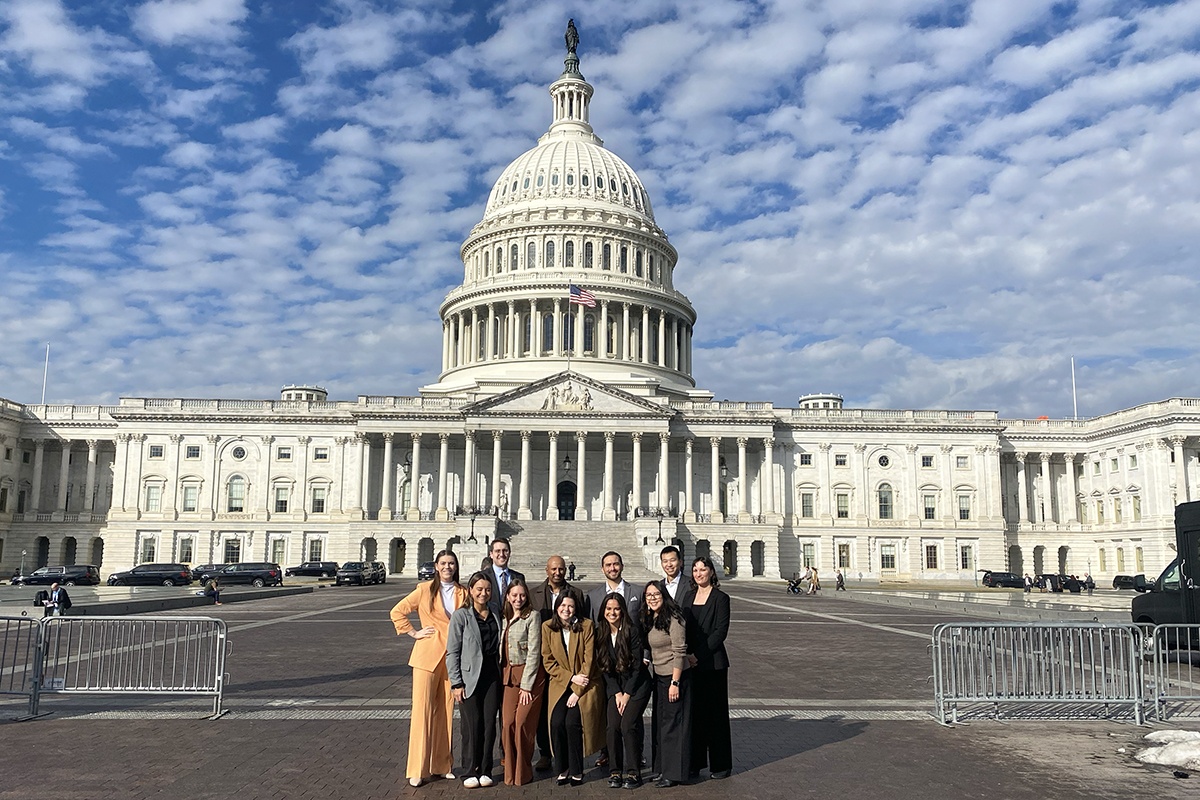The Physician Shortage Crisis in Tribal Health Care—And the Path to Addressing It
Dedicated advocacy efforts address health inequities in American Indian and Alaska Native populations due to a lack of funding for the Indian Health Service.
Posted on May 19, 2025

Indigenous people in the United States face significant health disparities and barriers to care, rooted in a history of colonialism, racism, and discrimination. Compared to their white counterparts, American Indian and Alaskan Native (AIAN) people are more likely to report having fair or poor health, to have chronic conditions like asthma and diabetes, and to experience mental health challenges.
However, barriers to treatment, such as broken promises and associated distrust and lack of health systems funding, make AIAN people far less likely to receive care.
The U.S. federal government is obligated to provide health care to AIAN people, based on the Constitution, treaties, Supreme Court cases, and various authorizing laws. The Indian Health Service (IHS) is an agency within the Department of Health and Human Services responsible for providing federal health services to 2.8 million AIAN people.
There are many nongovernmental organizations throughout Indian Country who help provide care to AIAN people as well, such as COPE, PIH’s sister organization on the Navajo Nation, which works to provide accessible, quality health care to indigenous people within their community.
Limited Budget, Limited Staff
The IHS funds multiple facilities and services, including IHS facilities run by the federal government, Tribal facilities operated by Tribes or Tribal organizations, and Urban Indian Organizations run by non-profit organizations. Collectively, these are known as “ITUs.”
Unfortunately, ITUs are chronically underfunded and unable to meet the needs of their patient population. According to a Government Accountability Office report, the IHS faced a physician vacancy rate of 29% in 2018, which is estimated to have worsened over the years as increasing numbers of health professionals have left due to a lack of resources and career advancement opportunities.
Addressing these workforce shortages—and the lack of funding that causes them—is critical to bolstering the health system and making care more accessible overall.
Each year, the IHS’s funding is determined by a budget that Congress allocates. When the budget runs out, services become more limited or disappear altogether, affecting what services ITUs can provide and the number of patients they can serve. In 2023, the average spending amount per person receiving care through IHS was just under half of that for Medicaid—$4,078, compared to $8,873—and less than a third of overall health care spending per person at $13,493. Under the current administration, crucial IHS—and overall health care—funding could decrease even further.
This limited budget impacts how much funding can go to the IHS workforce, including to recruitment and training—the IHS receives no specific funding for physician residency training programs, unlike the nearly $900 million annual budget of the Veterans Health Administration. Through Medicare, Medicaid, and the Health Resources Services Administration (HRSA), taxpayers spend more than $20 billion each year to train physicians. As more than 50% of residents stay where they train, it’s critical to have this effective pathway available for recruitment and retention at IHS facilities.
“It is a unique paradox that the Indian Health Service receives no congressional funding for graduate medical education (GME) yet has the highest rate of physician vacancies of any federal health organization,” Hannah Slattery, a Mi’kmaw descendant of Bear River First Nation in Nova Scotia, Canada and a member-at-large with the Association of Native American Medical Students (ANAMS), said. “For comparison, the Veterans Health Administration receives $874 million in congressional GME funding annually.”
Additionally, the IHS is the only large federal health system that doesn’t have a network of partnerships with academic medical centers. The eight residency and five fellowship programs that exist within IHS facilities are largely funded by the HRSA and private philanthropy.
By contrast, the Veterans Health Administration—which has benefited from 75 years of active partnership with teaching hospitals—supports tens of thousands of trainees in residency rotations. So, how can this gap be filled?
The Power of the Purse
Through constituent advocacy, partnership with ANAMS, and support from the Schooner and Haas foundations, Partners In Health (PIH) supports a multi-agency approach to address workforce shortages across ITUs.
To ensure that ITUs can recruit and retain the clinical workforce needed to care for AIAN populations in the U.S., PIH calls for:
- Increased funding for IHS to implement proven residency, rotation, and fellowship programs, from $0 to $30 million in FY2026
- Increase HRSA Teaching Health Center GME Program funding from $119 to $300 million per year
- Increased funding for the U.S. Department of Veterans Affairs’ pilot program for rotating residents with ITUs, which begins in 2025
- Enabling Medicare reimbursement for resident rotations at ITUs
In February and March, PIH advocacy staff supported ANAMS students as they met with their senators and representatives about these issues. Over 4 days at the Capitol, 37 young AIAN leaders from all over the country participated in 55 meetings with Congress.
“I feel incredibly lucky to have taken part in the [Tribal health] Hill Day experience. We were able to draw attention to the workforce shortages for ITUs and discuss creative solutions, while highlighting the continued resiliency of our communities,” Anna Klunk, Red Lake Ojibwe and ANAMS member, said. “It allowed me to learn about the legislative process more in depth so I can continue to be an advocate for Indian Country in the future.”
By training ANAMS students, PIH strives to empower Indigenous medical students and build the capacity of the next generation of Tribal health leaders.
“A recent AAMC publication showed that in the 2024 medical school applicant cycle, AIAN matriculants decreased 22.1%, the most of any demographic group” Slattery shared. “This was a significant blow to the ANAMS and Indigenous students across the U.S., where we fight for cultural visibility on every rotation and in every clinic. The proposal for GME funding for the IHS comes at a historic moment, when the need for Native American physicians and physicians to serve Native America has never been greater.”
Support Maternal Health
Every day, more than 700 women die from pregnancy or childbirth complications—that’s one woman every two minutes. Your support will help to deliver safe, dignified care for mothers and newborns around the world.

